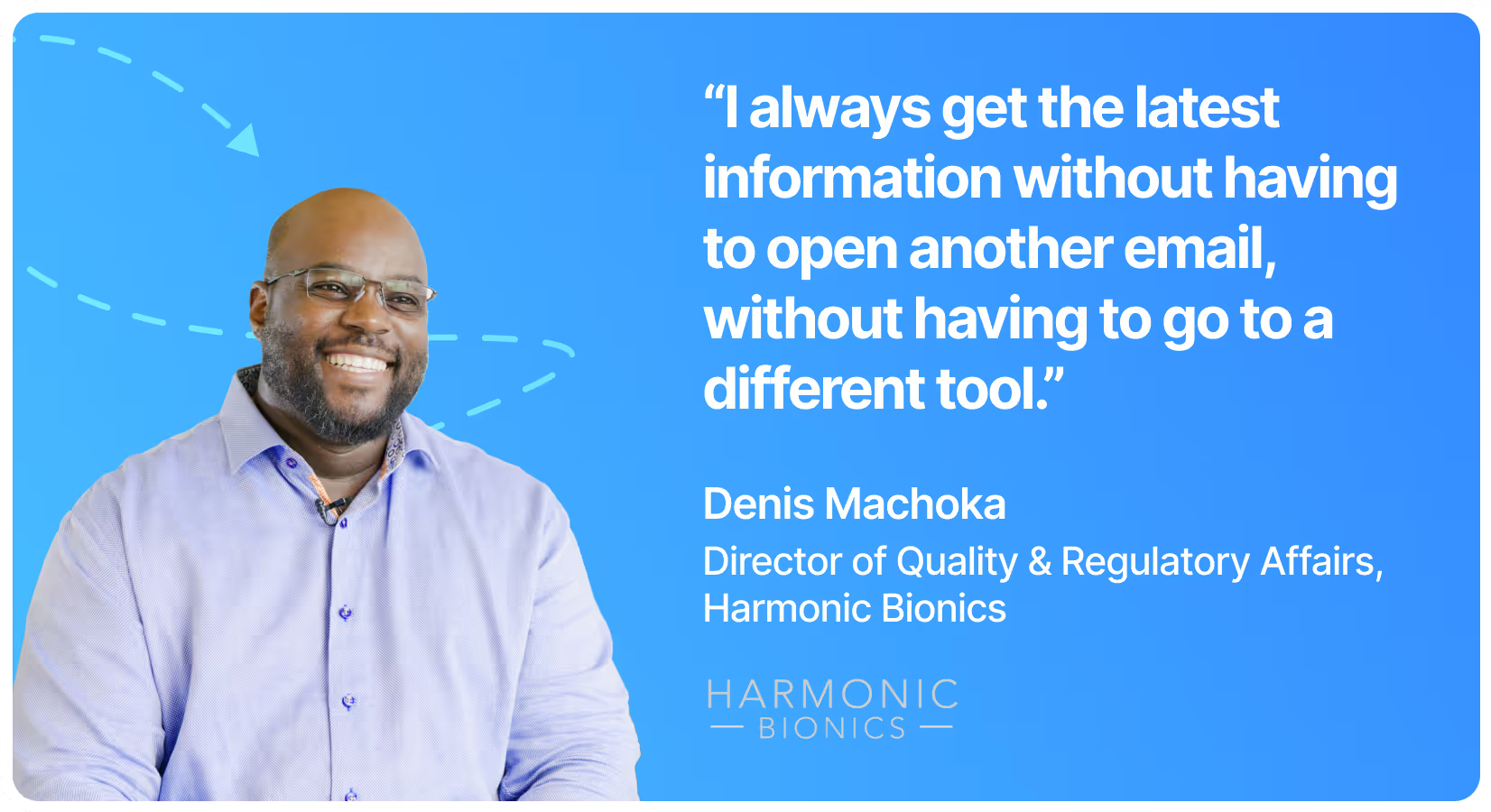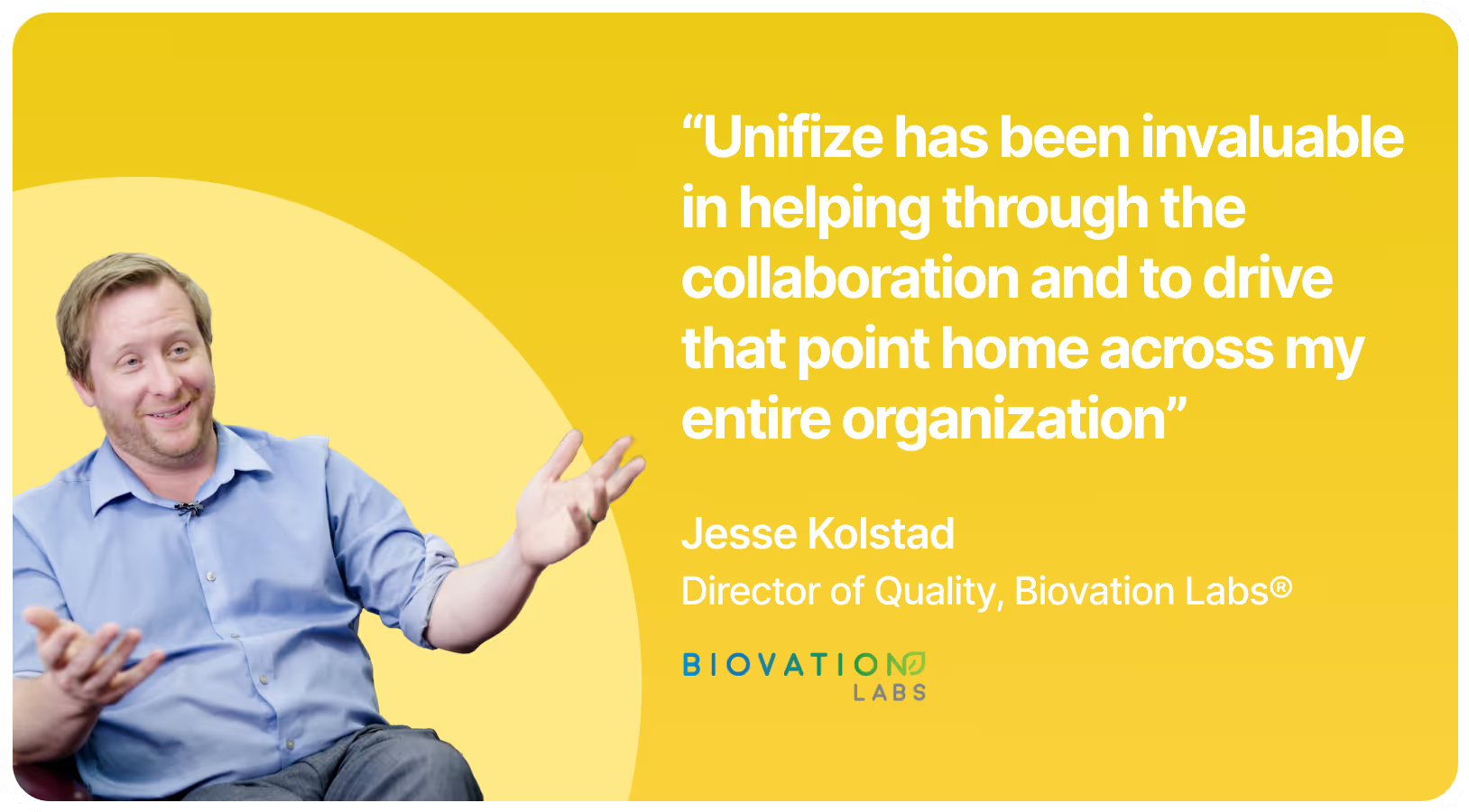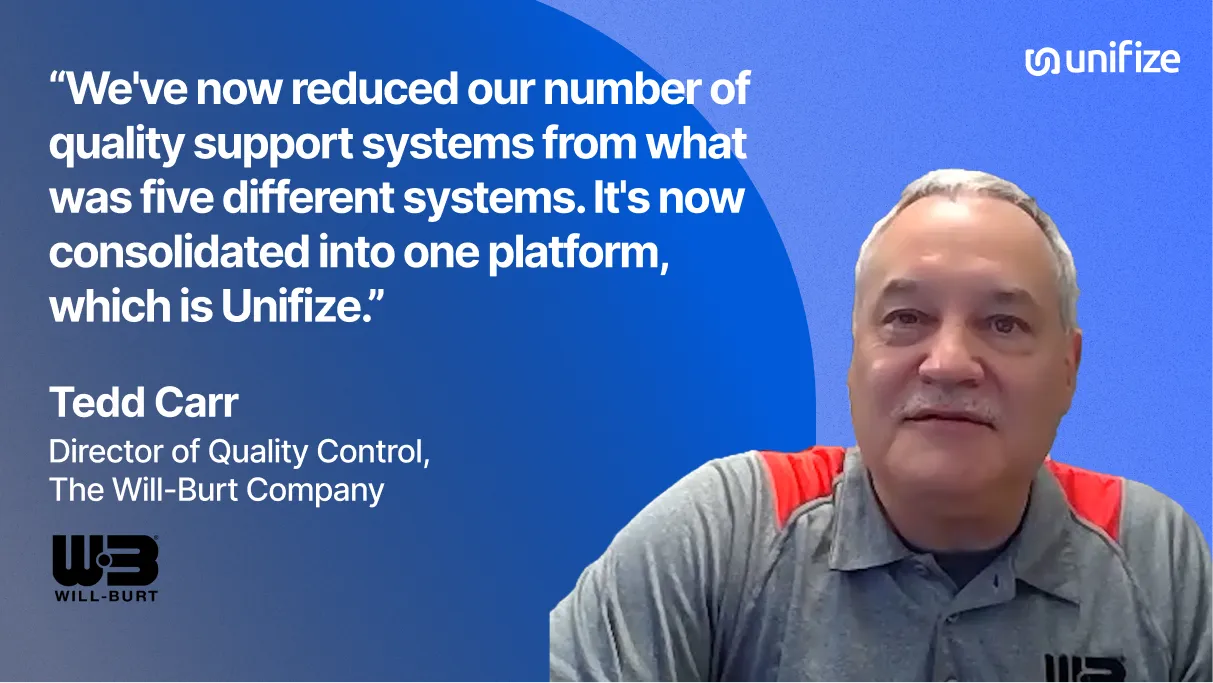Content Library
00:00 - 00:18
When you're talking about speed to market, you know, return on investment and speed to market, you have to look at the effort. It's going to take you to put the quality system in place. Are you going to go and have a person who is going to know every nuance about your configuration?
00:18 - 00:28
Because that's what it takes for most other companies. You will need to know all of the workflows in detail to know exactly where they are, touch points, on what level of security you expect for each of them.
00:28 - 00:47
You're also going to need an IT component of it because most of the systems will need a local client of some IT support. You're also going to a need level of access. Cost is also a consideration that you need to have. Are you going to have cost that is going to support that? Most of the systems are high cost, high maintenance.
00:47 - 01:01
When you look at those front end costs and configuration efforts that you need to put, it drives the cost of the final product. Now you're going to still be compliant, but you spent a lot of energy doing that.
01:01 - 01:17
On the other hand, you have Unifize, which out of the box it can be applied. Out of the box, without a lot of configuration, you can still get the level of compliance that you need. Now, you don't need IT to be involved. You leave the configuration of the system with QA.
01:17 - 01:23
Now you've changed the responsibility, it's no longer IT getting in the middle of it, but you have now QA driving it.
01:23 - 01:46
Who would you rather have? You'd rather have QA driving it than have IT involved in it? Because that's another component you have no control over. So I think the best way and we had this experience with Unifize was to have QA drive and once QA drove it, it was easy for QA to make the adjustments without necessarily getting somebody else to do the configuration.
01:46 - 01:52
Somebody has to update somebody else to go the back and forth is really quite.
01:52 - 02:12
system that we, I have used in the past involved going back to the customer and having a project manager that managed all the changes. So, QA would go into an isolation, they would make recommendations. They would have a meeting, that meeting would drive a decision which would go into the configuration team.
02:12 - 02:33
Then the configuration team would have another discussion about the changes are asking before the changes can be made. So if I'm a Lean Six Sigma person or somebody who just wants to get there directly, I'm cutting to the chase. I'm giving the tool directly to the QA organization who are making and are responsible for the data.
02:33 - 02:40
I would rather have the right people configure the system than have others involved who may not have a stake in the system.
02:40 - 02:59
in terms of time to market, those two systems may get you there, but one is going to get you there faster because it goes directly For us it took four weeks for the other systems that I've worked with. It took us almost a year. Part of that is because the decision makers sometimes when not available, they took a vacation.
03:00 - 03:25
Sometimes the project managers that were involved scheduled calls and those calls were not decisions were not made during those calls. So those decisions were punted forward. Sometimes the configuration did not work. That meant they had to go back and reassess those meetings and circles and cycles that you go through are taking time while Unifize comes out of the box, has everything that you need.
03:25 - 03:37
QA was in control of it. They are showing you how to do it. Access is provided and everybody can use it. As soon as everyone is in the system. It's no brainer.
Speed to market in Medtech is about empowering the quality team

Customers
Denis's experience with Unifize: Revolutionizing quality assurance systems
Quality expert Denis details his transformative journey with Unifize. He praises its efficient design, user-centric approach, and the system's ability to streamline data handling and accelerate time to market.

Customers
Harmonic Bionics and Unifize: A seamless transition to regulatory compliance
Clarissa Archer shares her experience integrating Unifize into Harmonic Bionics, underscoring its value in streamlining change control, facilitating communication, and ensuring robust documentation for regulatory compliance in the medical device sector.

Customers
Engineering efficiency with Unifize: Michael Hogan's insights from Harmonic Bionics
Mechanical Engineer Michael Hogan elaborates on how the integration of Unifize at Harmonic Bionics has streamlined his engineering processes, promoting transparency and rapid turnaround in the medical device domain.

Customers
Here’s how Biovation Labs reduced testing costs from $146K to $65K in two months
Learn how and why Biovation Labs, an FDA regulated nutraceutical manufacturer based in Salt Lake City, took the decision to transition from MasterControl to Unifize for their product lifecycle (PLM) and quality management (QMS) processes.

Customers
How a quality veteran from boosted issue closure time by 75% within the first month
Tedd Carr from The Will-Burt Company discusses overcoming their diverse and complex quality challenges across various sectors with Unifize. By consolidating five systems into one, they achieved clear accountability and reduced issue closure from months to days, demonstrating significant efficiency gains and faster decision-making in their quality processes.





